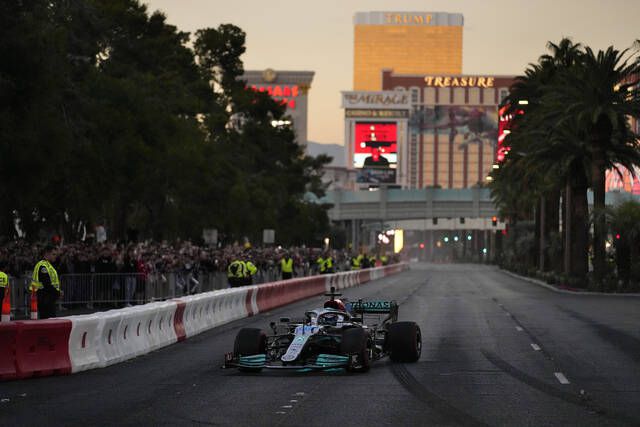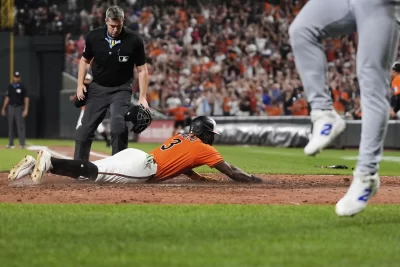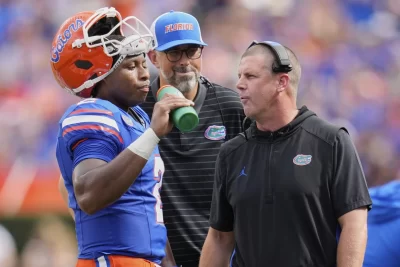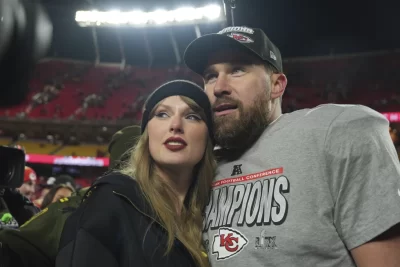
There is no such thing as a flawless first-year event, so go ahead and accept that there will be bumps and bruises in Formula One’s $500 million Las Vegas Grand Prix.
The warning signs were as bright as The Sphere when early pricing opened for this week’s extravaganza, the most expensive grand prix to attend on this year’s 24-race calendar.
With multimillion-dollar hospitality packages, exorbitant hotel rates and an initial average “get-in price” of about $2,000, this race was never about attracting new fans to the global motorsports series or growing the American audience. F1 owner Liberty Media clearly viewed a race in Las Vegas as an international showstopper for the highest of the high rollers.
Renee Wilm, CEO of the grand prix, vowed “we will be sold out by the time of the event” on a Nov. 3 earnings call by Formula One Group.
Well, the big race has finally arrived and t ickets are still available, both directly and on a dramatically reduced secondary market. Hotel prices along the Strip have plummeted and all signs suggest first-time F1 race promoter Liberty appears to have grossly overshot the price point for drawing in new fans and spenders.
Ticket prices slashed as much as 60% for some of the days ahead of Saturday night’s race are only a small part of the behind-the-scenes heartburn. Locals were infuriated by the daily disruptions caused by construction of the 3.85-mile (6.2 kilometer) street circuit that utilizes a large portion of the Strip while highlighting several Las Vegas landmarks with a 17-turn layout that’s been likened to a ” flying pig.”
There were early reports that F1 was demanding exorbitant licensing fees from any business that had a view of the track. F1 eventually relaxed its fees, but not before reportedly threatening to erect structures that would block the views. There are fresh concerns as to how casino employees will get to work once the Strip is closed so Max Verstappen can win another race in a season where he long ago clinched the championship.
The Caesars Palace Grand Prix ran in 1981 and 1982 on another mocked course, that time because it utilized a huge chunk of parking lot. This race has had almost two years of hype; this is F1’s baby, backed by Liberty, which spent $240 million to purchase property at the end of the Strip for construction of the paddock area and a permanent pit building.
That investment was included in one-time costs Greg Maffei, president and CEO of Liberty, highlighted when Ben Swinburne of Morgan Stanley asked on the earnings call “are you guys still expecting this sort of approaching $500 million of revenue?”
“I think those revenue numbers approaching that (are) still a reasonable estimate on profitability,” Maffei replied. “We’ve seen some one-time and start-up costs that may have been larger than anticipated. But remembering how this is impactful to us, not only directly, but indirectly, this is a very profitable race for us. Once we get past some of these initial start-up costs … it will increase. Let’s be clear, this year, we optimize for being there, being on time and having a great race.
“That’s not to say we won’t have some of (those) objectives next year, but I think we’ll be able to optimize on other variables as well and increase profitability.”
F1 and Liberty want Las Vegas to become a long-term fixture on the F1 schedule.
This week will be deemed a success by its promoters when all is said and done because F1’s return to Las Vegas after 41 years is a star-studded entertainment event. When the race was announced in early 2022, Liberty was clearly chasing the Netflix-driven, newfound popularity of F1 within the United States.
Las Vegas’ addition to the 2023 calendar is the third stop in the U.S – more than any other country – and fifth in North America. Before the behind-the-scenes “Drive to Survive” docudrama that exploded at the height of the pandemic, Austin, Texas, was the home of the lone F1 stop in the U.S. until Miami was added in 2022. The U.S. last hosted three F1 races in one season in 1982.
But nothing about this weekend is targeted toward the new American fan, starting with the pricing or when cars are even on the track. The Saturday night race itself isn’t scheduled to begin until 10 p.m. local — it is meant to be televised in Europe during the Sunday morning hours — and as such Las Vegas’ nighttime temperatures are expected to make for the coldest race in series history.
There is plenty to do while waiting for the actual racing. The parties and special events run all week and feature “The Netflix Cup,” a live event that will pit drivers from “Drive to Survive” and golfers from “Full Swing” in a match-play tournament.
Verstappen, who clinched a third consecutive world championship with six races remaining and has won 17 of 20 races this season, is unimpressed.
“First of all, I think we are there more for the show than the racing itself if you look at the layout of the track,” Verstappen said. “But you know, I’m actually not that into it. I’m more like, ‘I’ll go there and do my thing and be gone again.’”
And that’s the other problem with this ballyhooed event. Barring a complete disaster, Verstappen and Red Bull should win again this weekend and American racing fans don’t find his dominance all that appealing. Viewership on ESPN this season is down 8% from last year, but his Nov. 5 win in Brazil was still the most-watched show that day on the sports network and averaged a larger audience in 18-to-34 demographic than the NASCAR championship finale, according to SportsMedia Watch.
F1 is still hitting high marks with its global audience, which appreciates the nuances of the racing series and understands the best competition isn’t usually for the win. F1 President Stefano Domenicali touched on that with investors.
“The other teams are still competing firstly, with tight battles all the way down the field at every event,” Domenicali said on the earnings call. He noted that six different teams have scored podium finishes this season, and Ferrari, McLaren and Mercedes have improved.
“We have more battles left to witness for the remainder of the season, even with the number of teams shifting focus to their 2024 cars,” Domenicali said. “With gaps in performance appearing to be closing over recent events, we hope for a real challenge for Max next year.”







